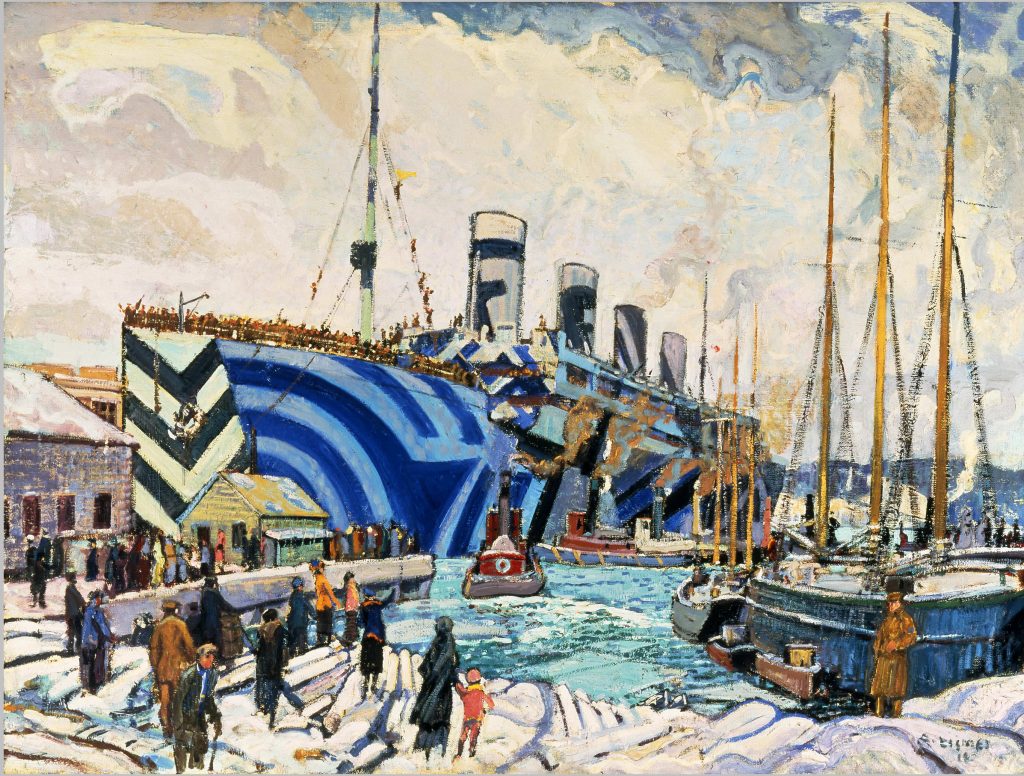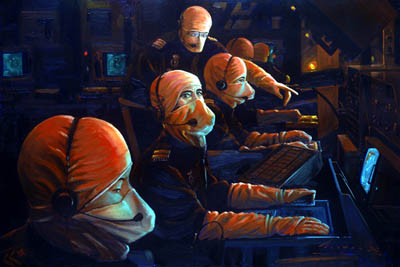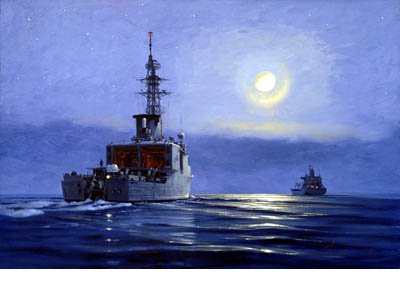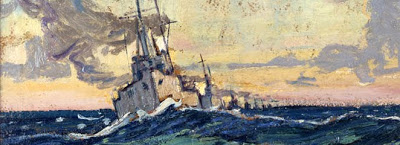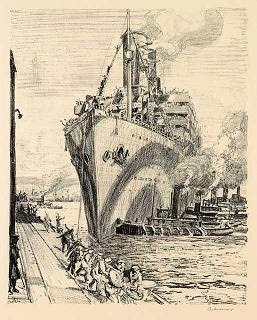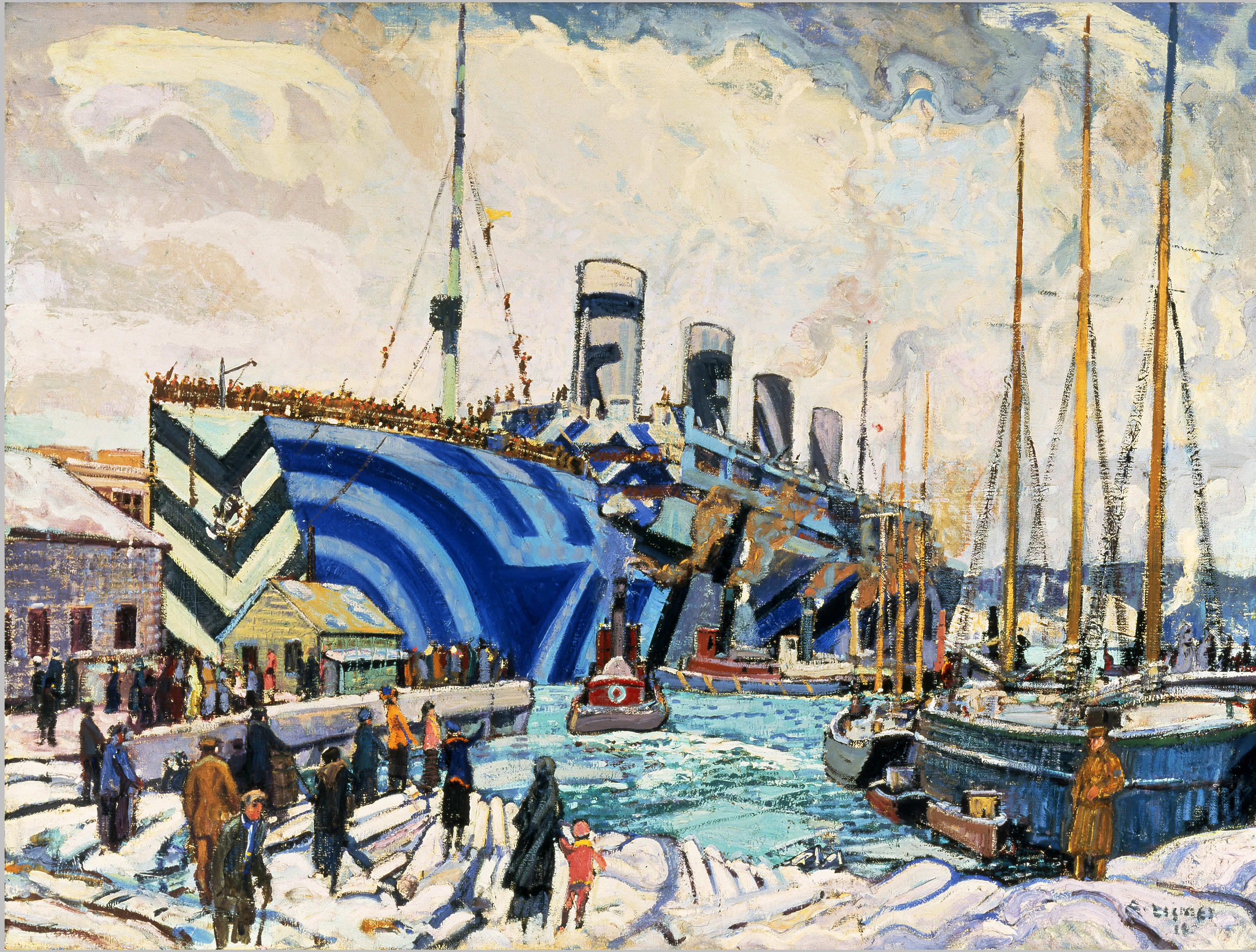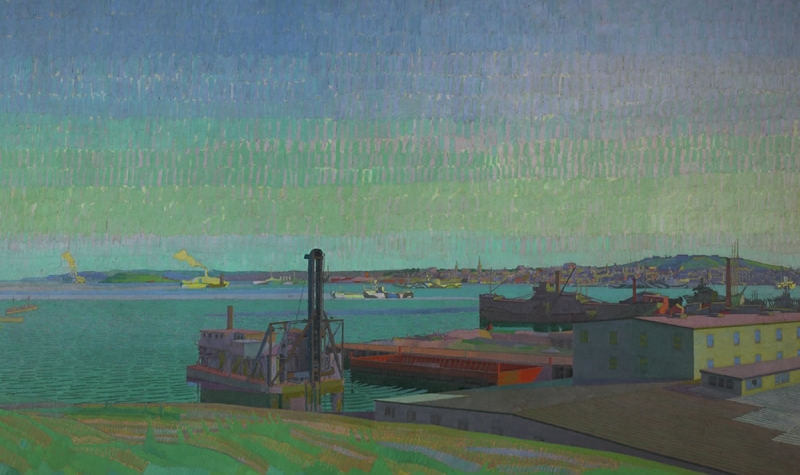
Harold Gilman, Halifax Harbour, 1918. Oil on canvas, 198 x 335.8 cm. National Gallery of Canada, Ottawa. Transfer from the Canadian War Memorials, 1921. Photo: NGC The Painting looks to be looking south, from Dartmouth cove.
The paintings Halifax Harbour, the largest and most ambitious work executed by British artist Harold Gilman, and Winter Camouflage, by Group of Seven co-founder Arthur Lismer, are at the heart of the new exhibition Masterpiece in Focus: Halifax Harbour 1918. The show, which marks the 100th anniversary of the end of the First World War, is presented at the National Gallery of Canada from October 12, 2018 to March 17, 2019. It is organized in partnership with the Art Gallery of Nova Scotia, where the exhibition will be on display from April 12 to September 2, 2019.
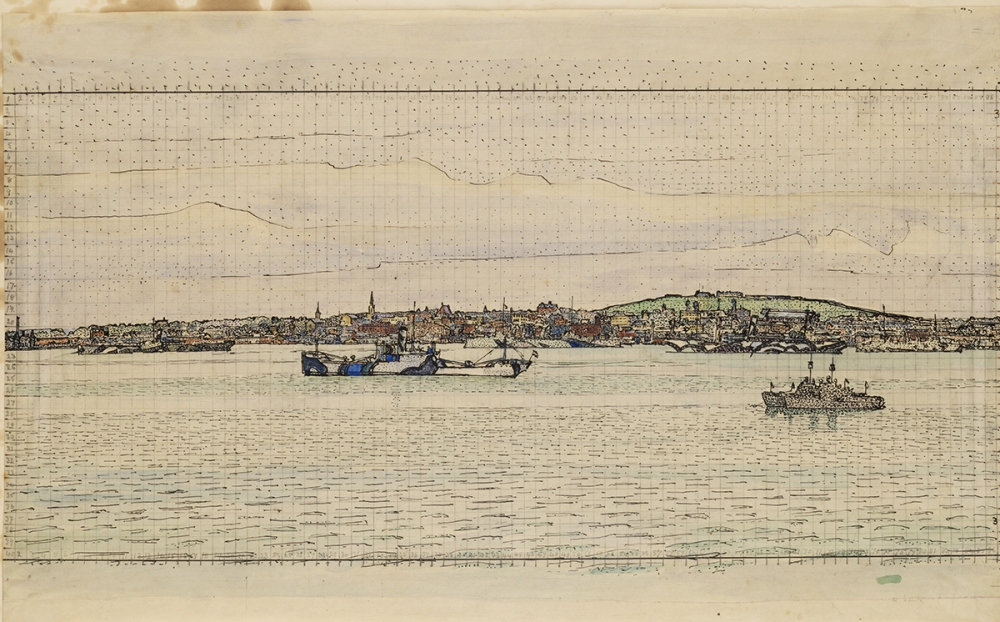
Harold Gilman, Halifax Harbour, 1918. Ink and watercolour on paper, 33.5 x 54.5 cm. Gift of Mrs Harold Gilman (no.VAG 31.57). Collection of the Vancouver Art Gallery.
In 1918 the Canadian War Memorials Fund (CWMF) commissioned artists Harold Gilman (1876–1919) and Arthur Lismer (1885–1969) to depict the war effort at the port of Halifax. The assignment came after the most destructive explosion of the First World War, when a freighter collided with a munitions ship in the Halifax harbour in 1917 killing nearly 2,000 people and injuring thousands more.
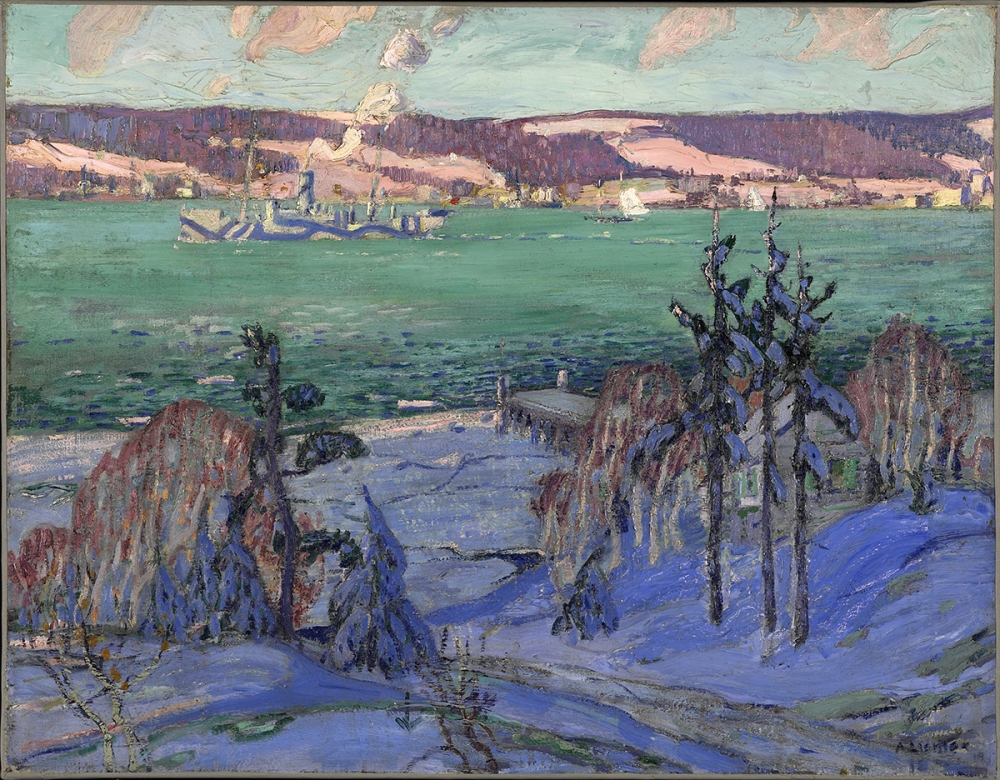
Arthur Lismer, Winter Camouflage, 1918. Oil on canvas, 71.5 × 91.6 cm. Purchased 1918. National Gallery of Canada, Ottawa. © Estate of Arthur Lismer. Photo: NGC
Featuring 35 works, including preparatory paintings and drawings, sketches, prints and photographs, Halifax Harbour 1918 explores how these two painters-turned-war-artists approached their respective missions during a critical moment in the history of Canadian landscape painting and the challenges they faced while working in Halifax in the aftermath of the tragedy. For the first time, Gilman’s monumental canvas can be viewed alongside his preparatory works.
the gallery magazine has an article on the Exhibit.
A bilingual and fully illustrated catalogue, as well as essays by Anabelle Kienle Poňka, Lily Foster and Sarah Fillmore accompanies the exhibition. Co-published with Goose Lane Edition. Available at the Boutique at the price of $35, or online at shopNGC.ca
Halifax Harbour, 1918, organized by Kienle Poňka and Gilman scholar Lily Foster, includes loans from the Art Gallery of Nova Scotia, the Canadian War Museum, Beaverbrook Art Gallery, the Vancouver Art Gallery, the British Council, the Higgins Art Gallery & Museum in Bedford, England, and private collections. Following its run at the Gallery, the exhibition will be on view at the Art Gallery of Nova Scotia from April 12 to September 2, 2019.


